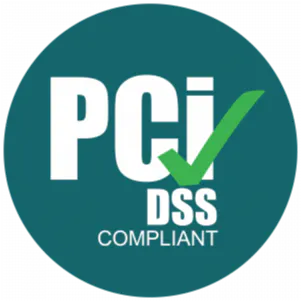Posted by Anne-Marie Avalon
June 20, 2023
One of today’s most dangerous cybersecurity vulnerabilities is an SQL injection flaw, which can lead to severe consequences if not addressed. This blog will provide an in-depth look at SQL injection flaws, what an SQL injection attack and most importantly, how to prevent them.
Understanding SQL Injection Flaws
SQL injection flaws are a type of security vulnerability that allows attackers to inject malicious SQL code into a query made by an application to its database. These flaws typically arise when developers create dynamic database queries using string concatenation that includes user-supplied input. Attackers can exploit these flaws by injecting malicious SQL code into input fields, which can then impact the logic of the executed query, potentially leading to unauthorized data access or manipulation.
If successfully executed, an SQL injection attack can grant hackers access to sensitive information such as credit card details, passwords, or personal user information. In some cases, it can even enable unauthorized access to backend systems or the underlying server, providing attackers with a persistent backdoor into an organization’s systems.
How SQL Injection Flaws are Exploited
To exploit an SQL injection flaw, attackers need to identify a parameter that a web application passes through to a database interaction. They can then embed malicious SQL commands into the content of the parameter, tricking the web application into forwarding a malicious query to the database. For instance, if a web application directly concatenates user input into a SQL query without proper validation or sanitization, an attacker could input something like “John’; DROP TABLE Users; –“, resulting in the deletion of the ‘Users’ table in the database.
Consider an online bookstore where you can search for books by title. For example, if you type “Harry Potter,” into the search box the website translates your input into a SQL query. This query asks the website’s database to return all details of books whose title matches ‘Harry Potter’ and it may look something like this:
Now, imagine a malicious user doesn’t search for “Harry Potter,” but instead enters the following:
In this case, the resulting SQL query will be:
In SQL, ‘1’=’1′ is always true, so this query will return all books in the database, not just the ones that match a particular title.
But that’s not all. A more malicious user might attempt to delete all books in the database with an injection like:
The resulting query will be:
This is actually two SQL statements: the first one selects books with an empty title (likely none), and the second one deletes all books from the database. The — symbol comments out the rest of the query, preventing any syntax errors.
When does an SQL Injection Attack Become a Zero Day Attack?
An SQL injection attack becomes a Zero Day attack when the vulnerability it exploits was previously unknown to the public or the software developers and does not have any available patches or fixes at the time of the attack. The term “Zero Day” refers to the fact that the developers have “zero days” to fix the issue because the exploit is already known to attackers and possibly being used in the wild.
How Do You Prevent SQL Injection Attacks?
Preventing SQL injection attacks is a critical task that requires understanding and vigilance. There are several best practices and techniques that developers can employ to minimize the risk of SQL injection flaws:
1. Use of Prepared Statements (with Parameterized Queries)
Prepared statements are one of the primary defenses against SQL injection attacks. They involve separating the data from the query, preventing attackers from altering the query’s structure. With prepared statements, developers define the SQL code first and then pass in each parameter to the query. This approach makes it significantly harder for attackers to inject malicious SQL code.
2. Use of Properly Constructed Stored Procedures
Stored procedures can also provide a level of protection against SQL injection flaws, especially when combined with parameterized inputs. By encapsulating SQL statements and treating all input as literal strings, not executable code, stored procedures can mitigate the risk of injection attacks.
3. Allow-list Input Validation
Allow-list input validation involves validating user-supplied input against a list of known, trusted, and acceptable values. By ensuring that only valid input is accepted, this approach can prevent malicious SQL from impacting the executed query’s logic.
4. Escaping All User Supplied Input
Another defensive strategy is to escape user-supplied input, ensuring that the database management system interprets it solely as data, not as SQL commands. While this approach can provide some protection, it is crucial to use it in conjunction with other defenses as it may not offer comprehensive security on its own.
5. Enforcing Least Privilege
To minimize the potential damage of an SQL Injection Attack, it is essential to ensure that accounts running database queries have the least privilege necessary to perform their function. By limiting the privileges of these accounts, the impact of an attack can be significantly reduced.
See More: Just-in-time Credentials
6. Input Validation
Developers should always verify user-submitted data before accepting it. Regular expressions (RegEx) can be used to reject any data containing potentially dangerous characters or code, thereby preventing SQL injection attacks.
7. Code Scanning for Vulnerabilities
Using Static Application Security Testing (SAST) and Software Composition Analysis (SCA) tools, developers can scan their code for potential SQL Injection Vulnerabilities. By proactively searching for and patching vulnerabilities, developers can minimize the risk of successful attacks.
It is important to note that while the aforementioned measures significantly reduce the risk of SQL injection attacks, a comprehensive, layered defense-in-depth strategy is always advisable to ensure robust security.
See More: How the LastPass Data Breach Highlights the Need for Secrets Management
Differentiating SQL Injection and Secrets Vulnerabilities
SQL injection flaws and secrets vulnerabilities are distinct issues that require separate considerations. SQL injection primarily involves the handling of user input in database queries, while ensuring that machine secrets remain secure pertains to the proper management and usage of cryptographic keys or credentials within or between running applications. Although both represent potential attack surfaces that bad actors could exploit, they do not directly influence each other.
While SQL injection flaws can allow unauthorized access to databases and compromise data integrity, managing secrets focuses on safeguarding sensitive information such as encryption keys, API credentials, and passwords. Implementing a robust secrets management solution, such as the SaaS-based Secrets Management provided by the Akeyless platform, ensures secure storage, rotation, and access control of machine secrets, complementing defenses against SQL injection flaws.
See More: Secrets Management
Conclusion
SQL injection flaws pose a significant threat to the security of applications and databases. Understanding how these vulnerabilities can be exploited and employing the necessary preventive measures is crucial for maintaining robust cybersecurity. By utilizing techniques such as prepared statements, stored procedures, input validation, and code scanning, developers can fortify their applications against SQL injection attacks. Furthermore, integrating a comprehensive secrets management solution, like the one offered by Akeyless, can enhance overall security posture. With a proactive and layered defense-in-depth strategy, businesses and individuals can safeguard their data and systems, mitigating the risks posed by SQL injection flaws.
Remember, cybersecurity is an ongoing process, and staying vigilant against emerging threats is essential. By continuously updating and patching systems, regularly testing for vulnerabilities, and staying informed about the latest security practices, you can ensure a robust and secure environment for your applications and data.
Get a demo today and start securing your company’s secrets without the headaches.
















